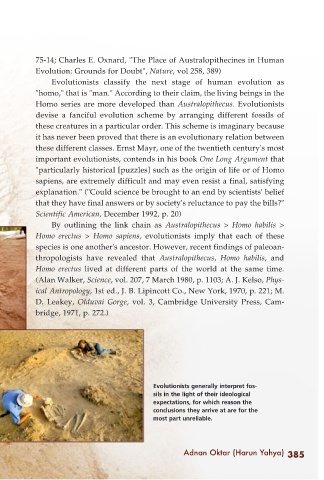Page 387 - A Helping Hand for Refugees
P. 387
75-14; Charles E. Oxnard, "The Place of Australopithecines in Human
Evolution: Grounds for Doubt", Nature, vol 258, 389)
Evolutionists classify the next stage of human evolution as
"homo," that is "man." According to their claim, the living beings in the
Homo series are more developed than Australopithecus. Evolutionists
devise a fanciful evolution scheme by arranging different fossils of
these creatures in a particular order. This scheme is imaginary because
it has never been proved that there is an evolutionary relation between
these different classes. Ernst Mayr, one of the twentieth century's most
important evolutionists, contends in his book One Long Argument that
"particularly historical [puzzles] such as the origin of life or of Homo
sapiens, are extremely difficult and may even resist a final, satisfying
explanation." ("Could science be brought to an end by scientists' belief
that they have final answers or by society's reluctance to pay the bills?"
Scientific American, December 1992, p. 20)
By outlining the link chain as Australopithecus > Homo habilis >
Homo erectus > Homo sapiens, evolutionists imply that each of these
species is one another's ancestor. However, recent findings of paleoan-
thropologists have revealed that Australopithecus, Homo habilis, and
Homo erectus lived at different parts of the world at the same time.
(Alan Walker, Science, vol. 207, 7 March 1980, p. 1103; A. J. Kelso, Phys-
ical Antropology, 1st ed., J. B. Lipincott Co., New York, 1970, p. 221; M.
D. Leakey, Olduvai Gorge, vol. 3, Cambridge University Press, Cam-
bridge, 1971, p. 272.)
Evolutionists generally interpret fos-
sils in the light of their ideological
expectations, for which reason the
conclusions they arrive at are for the
most part unreliable.
Adnan Oktar (Harun Yahya) 385

